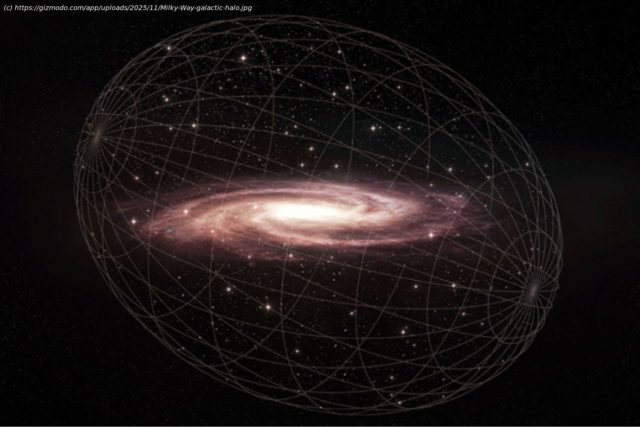A researcher identified gamma ray emissions that appear to have originated from dark matter, but other physicists still aren’t convinced.
Astronomers have spent nearly a century searching for dark matter, the invisible scaffolding thought to hold galaxies together. While there’s abundant indirect evidence to suggest this mysterious substance exists, no one has been able to detect it directly. Now, a new study might finally signal a breakthrough.
Using data from NASA’s Fermi Gamma-ray Space Telescope, astronomer and University of Tokyo professor Tomonori Totani is claiming to have identified gamma-ray emissions that appear to have originated from dark matter. His findings, published Tuesday in the Journal of Cosmology and Astroparticle Physics, suggest this radiation was emitted by colliding WIMPs (weakly interacting massive particles).
“WIMPs, a leading candidate for dark matter, have long been predicted to annihilate and emit gamma rays, prompting numerous search efforts,” Totani told Gizmodo in an email. “This time, using the latest Fermi satellite data accumulated over 15 years and a new method focusing on the halo region (excluding the galactic center), I have discovered gamma-ray emissions believed to originate from dark matter.”
It’s an intriguing finding, but experts we spoke to remain unconvinced, warning that the signal could be a case of cosmic noise mistaken for dark matter or yet another frustrating false positive.
Totani himself emphasizes that it’s too early to definitively say these gamma rays originated from dark matter, but their characteristics suggest they could have. Based on his findings, they don’t look like those that originate from conventional astronomical sources. “At the very least, it represents the most promising candidate radiation from dark matter known to date,” he said.Finding a needle in a cosmological haystack
Astronomers believe dark matter exists because no observable matter in the known universe can explain certain gravitational effects, such as the unexpectedly rapid rotation of galaxies or the fact that they’re held together more tightly than they should be.
Dark matter is the theoretical answer to this cosmological conundrum, but if it exists, its particles clearly do not absorb, reflect, or emit light.
Домой
United States
USA — software Controversial New Study Points to the Most Promising Dark Matter Signal Yet






